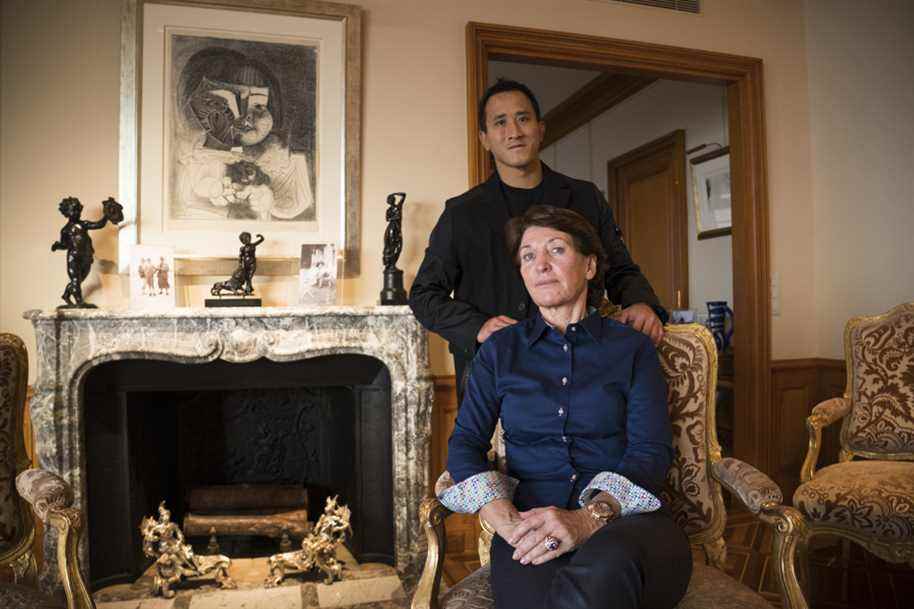(Geneva) The heirs of Pablo Picasso, the famous Spanish artist of the XXand century, embark on the trade of the XXIand century by selling 1010 digital art pieces of one of his ceramic works that have never been seen publicly before — riding a fad for “crypto” assets that has taken the art world by storm and finance.
Posted at 4:12 p.m.
In an exclusive interview ahead of the official launch this week, Pablo Picasso’s granddaughter Marina Picasso and her son Florian Picasso opened their apartment — which is filled with works by their illustrious ancestor — in an upscale neighborhood of Geneva. There they offered a glimpse, however slim, of the piece behind what they present as an unprecedented fusion of old-school artwork and digital assets.
They are looking to cash in on and ride a wave of interest in non-fungible tokens, or JNFs, which have brought millions to much lesser-known artists and have been criticized by some as costly enrichment schemes for the environment.
A Picasso, say his family’s promoters, would mark the entry of a Grand Master into the game.
In economics jargon, a fungible token is an asset that can be traded on a one-for-one basis. Think dollars or bitcoins — each has exactly the same value and can be traded freely. A non-fungible object, on the other hand, has its own distinct value, such as an old house or a classic car.

PHOTO BORIS HEGER, ASSOCIATED PRESS
The descendants of the artist hide their game well, to arouse interest and protect – for the moment – a family heritage. They only show a fragment of the underside of the JNF-related work, a ceramic piece the size of a large salad bowl. The exposed parts show shapes like a thick yellow line, a drooling green spot, and a brushed-on number “58” at the base.
Cross this notion with the cryptocurrency technology known as blockchain and you get JNF. These are actually digital certificates of authenticity that can be attached to digital art or just about anything in digital form — audio files, video clips, animated stickers, even a news article read online. .
“We are trying to build a bridge between the JNF world and the fine arts world,” said Florian Picasso, the artist’s great-grandson.
A ceramic piece the size of a large salad bowl
The descendants of the artist hide their game well, to arouse interest and protect – for the moment – a family heritage. They only show a fragment of the underside of the JNF-related work, a ceramic piece the size of a large salad bowl. The exposed parts show shapes like a thick yellow line, a drooling green spot, and a brushed-on number “58” at the base.
Marina Picasso said the cherished piece of pottery dates from October 1958, when she was a child.
“It’s a work that represents a face, and it’s very expressive,” she says. It’s joyful, happy. She represents life. It’s one of those objects that have been part of our life, our intimate life, my life with my children. »
Sotheby’s is holding an auction in March that will include a unique JNF as well as the actual ceramic bowl. A first phase of online sales of more than 1,000 other JNFs begins Friday through the Nifty Gateway and Origin Protocol platforms.
Florian Picasso said they agreed on the colored ceramic piece because it was “fun” to begin with.
A younger community of Picasso lovers

PHOTO BORIS HEGER, ASSOCIATED PRESS
“I think it’s part of Picasso’s legacy, because we pay homage to him and his way of working, which was always creative,” said Florian Picasso.
A JNF Picasso features almost vintage symbolism, much like when the Beatles collection finally hit iTunes. The family says the goal is to create a younger community of Picasso lovers.
“Everything is changing,” said Florian Picasso, insisting that the JNF honor the great artist.
“I think it’s part of Picasso’s legacy, because we pay homage to him and his way of working, which was always creative,” he said.
How quaint those days of yore seem when Picasso, according to legend, simply doodled on a napkin as payment for a restaurant meal — his work supposedly worth far more than the cost of the food and drink he he had appreciated.
Recipes to organizations
Proceeds will be partly donated to a charity that aims to help overcome a shortage of nurses as well as a non-governmental organization that wants to help reduce carbon in the atmosphere. The JNF will also come with music composed by Florian Picasso, DJ and music producer, with songwriter John Legend and rapper Nas.
Even a full rendition of this track is yet to be released to the public: Florian Picasso played a snippet for a journalist, then ended it.
“And to learn more, you have to buy the JNF,” he joked.
